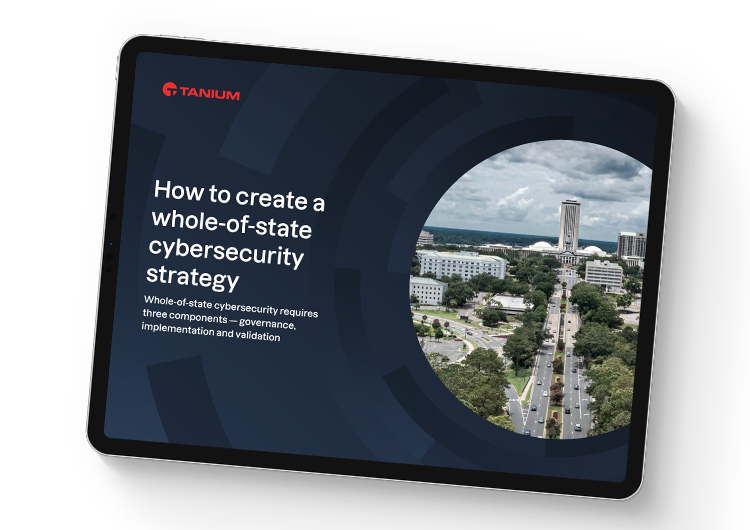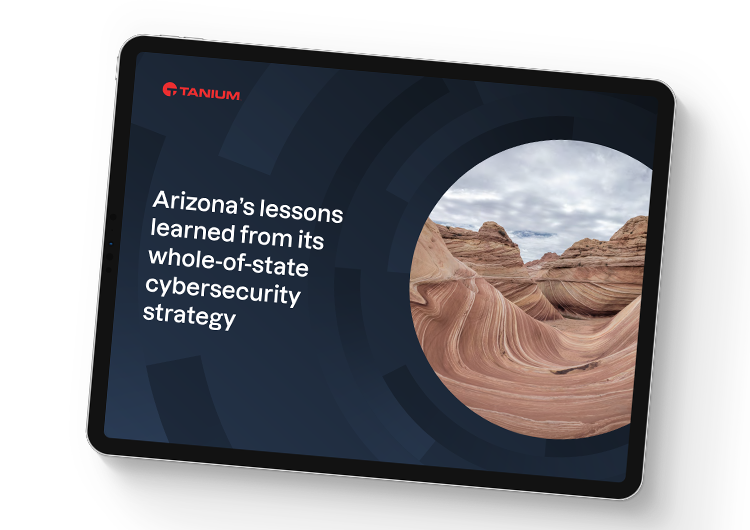What is a whole-of-state approach to cybersecurity?
In a whole-of-state architecture, state, local, education, and tribal leaders work together and pool resources to improve their cyber posture and reduce risk.
The status quo isn’t working
Less than half of IT executives rate the relationship between local and state government IT security practices as “fair.”
Local governments are under attack
Roughly 44% of ransomware attacks worldwide are now targeting municipalities.
State & local governments need to future-proof security
The number of attacks targeting the government sector increased by 95% worldwide in the second half of 2022 compared to 2021.

How to create a whole-of-state cybersecurity strategy
Whole-of-state cybersecurity requires three components — governance, implementation and validation.
Why adopt a whole-of-state approach?
Government agencies at all levels must reduce their cyber-attack surface. A whole-of-state method to IT risk and cyber hygiene bridges the gaps in outdated, siloed strategies.
Increased Coordination
Statewide collaboration reduces fragmented IT risk management that would otherwise leave sensitive data and essential services at risk.
Complete Visibility
Consolidated and comprehensively aligned tools increase cyber hygiene to eliminate gaps where threats can enter unseen.
Consistent Governance
Joint direction across all levels of government fosters interconnectivity of cybersecurity systems to mitigate potential threats.
Scalable Implementation
Statewide execution leads to scalable, measured results that fractured strategies and point solutions can’t manage otherwise.

Lessons learned from Arizona’s whole-of-state cybersecurity strategy
In this eBook, we dig into the details of how they successfully brought a whole-of-state strategy to life and the real-world ways it’s made Arizona safer.
Featured resources
Visit our whole-of-state resource library for more resources


